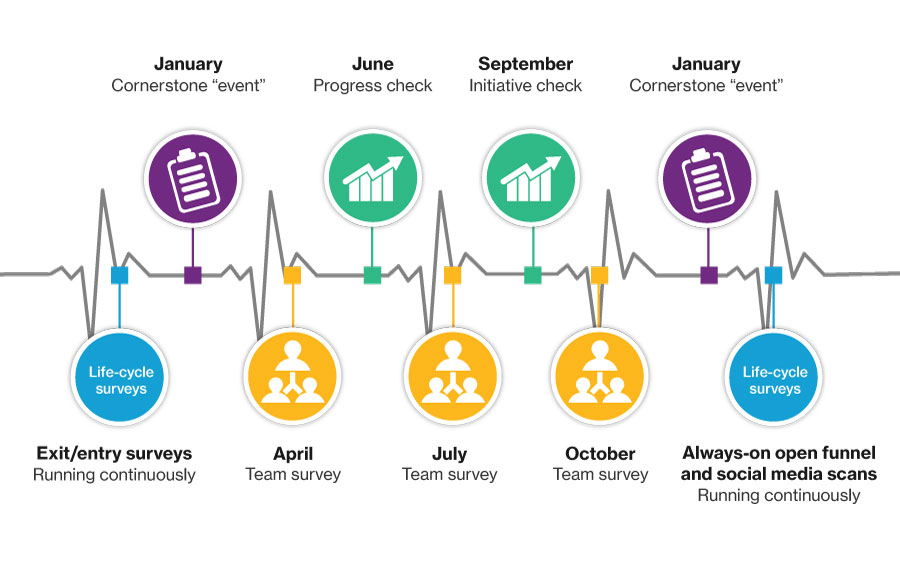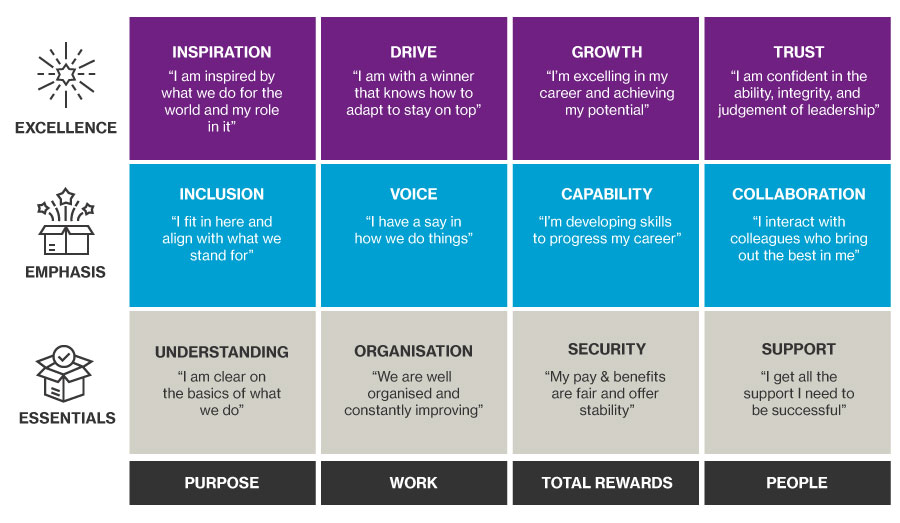Part of the Transform to Perform series
Organisations are increasingly focused on employee experience (EX) as the sum of all the touchpoints and moments that matter between employees and managers. Employees expect an ‘always on’ experience to drive connection, support development and inspire performance. Leaders need to hear from their people now more than ever.
Implementing a robust, actionable listening strategy provides leaders with the right employee insights at the right time to drive changes in mindsets and behaviours. This allows them better business success and emerge stronger during this highly disruptive time.
To design an EX listening strategy, the first step is to understand why we want employees’ opinions. Based on in-depth conversations with leaders and a current state analysis we help identify fundamental goals that companies seek to achieve. As we look at these goals we should ask, how often are the issues being measured and are likely to change, and what information is required to fully understand each issue.
| Listening tool | Best for issues that... | Where you need... | Examples... |
|---|---|---|---|
| Large-scale “event” | Change more slowly | Broad data |
|
| Pulse survey | Change more quickly | Narrow/Focused data |
|
| Onboarding/Exit | Change with employee milestones | Event-focused data |
|
| Always on/ Social media | May change quickly, thus requires regular monitoring | Unstructured data |
|
When designing a listening strategy, it should align with your business strategy and, naturally will vary from one organisation to the next, so there really isn’t a ‘one size fits all’ approach. Best practice is to include agile activities, which are typically anchored by a cornerstone census survey (e.g. your annual engagement survey) as shown in Figure 02.

Employee experience needs to reflect current social issues, purpose, trust, inclusiveness and human experience. This means employee listening is just as much about how the employee experience the process as they are about the data you collect.
A great listening strategy also focuses on driving action to enhance employee experience. Digital technology has helped in this space. The explosion of Software as a Solution providers and our revolutionary survey platform enables an agile listening strategy which incorporates predictive analytics, real time personalised advice, natural language processing and robust action planning features to give organisations the insights they need to build a high performance culture.
We are seeing organisations introducing and maintaining a listening strategy but also enhancing their EX by embedding our breakthrough evidence-based model.
By blending the four dimensions of EX – purpose, work, total rewards and people – with levels of differentiation, a model showing the full landscape of employee experience emerges. We call this Willis Towers Watson’s High Performance Employee Experience (HPEX) model.

Our HPEX model is easily applied to a listening strategy. It provides organisations the ability to bring together a combination of sustained financial success and a fantastic workplace culture.
Embedding a listening strategy using our HPEX model unlocks critical insights into culture and develops a plan that empowers managers and leaders, teams and HR to put them on the path to high performance while driving real change.